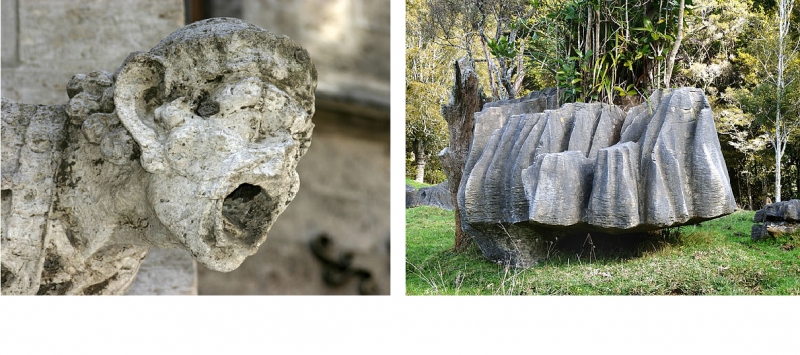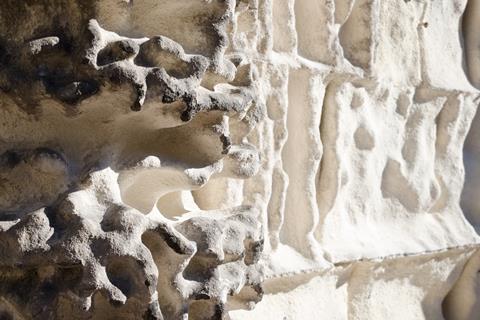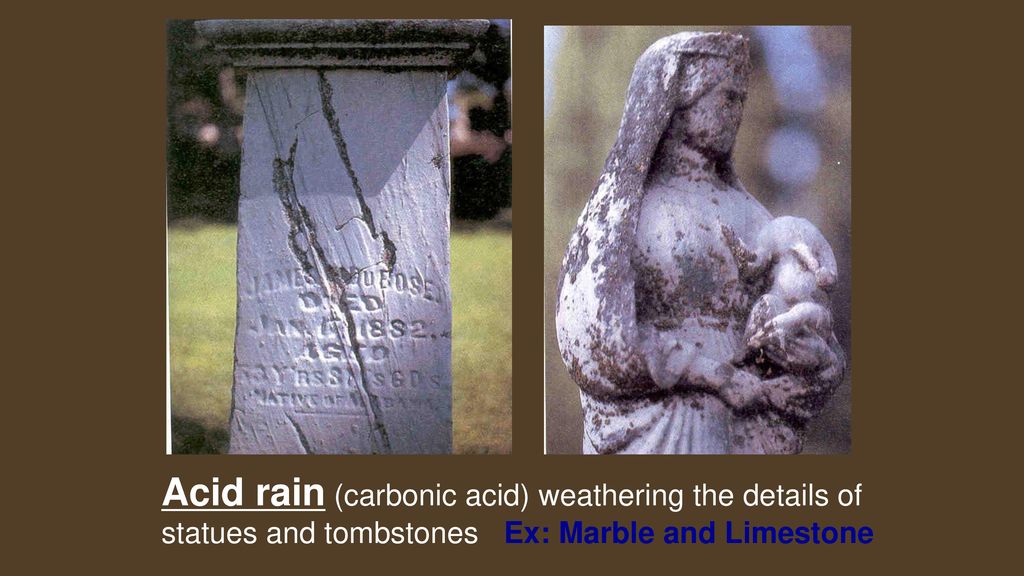Acid rain can contain hydrochloric acid hcl and a stone building can contain calcium carbonate caco3.
Acid rain weathering a marble statue physical or chemical change.
In exposed areas of buildings and statues we see roughened surfaces removal of material and loss of carved details.
Favorite answer it is a chemical change because the acid sulfuric and nitric in the rain will react with the marble caco3 to produce carbon dioxide water and calcium sulfate h2so4 caco3.
When sulfurous sulfuric and nitric acids in polluted air react with the calcite in marble and limestone the calcite dissolves.
These two substances react according to.
In exposed areas of buildings and statues we see roughened surfaces removal of material and loss of carved details.
When the sulfur dioxide dissolves in the water in the clouds it makes acid rain rainwater that is more acidic than normal.
Acid rain damaging a marble statue is a physical change.
Acid rain harms fish and trees but it also makes chemical weathering.
Occurs when chemical reactions dissolve or change the minerals in rocks c.
Ice wedging in rock.
Acid rain s effect on stone is a chemical change.
Breaks apart rocks by physical processes b.
Occurs when iron is exposed to oxygen and water d.
When sulfurous sulfuric and nitric acids in polluted air and rain react with the calcite in marble and limestone the calcite dissolves.
Marble with its larger crystals and smaller pores can attain a high polish and is thus preferred for monuments and statues.
Acid rain deteriorating a marble statue d.
No its a chemical change because the acid in the rain reacts with the copper in the statue having a reaction oxidizing it and turning it green.
Stone surface material may be lost all over or only in spots that are more reactive.
3 4 5 asked in ancient greece artists and painters.
Acid precipitation affects stone primarily in two ways.
Acid rains are one of the main degradation agents for marble artifacts.
How does acid precipitation affect marble and limestone buildings.




























